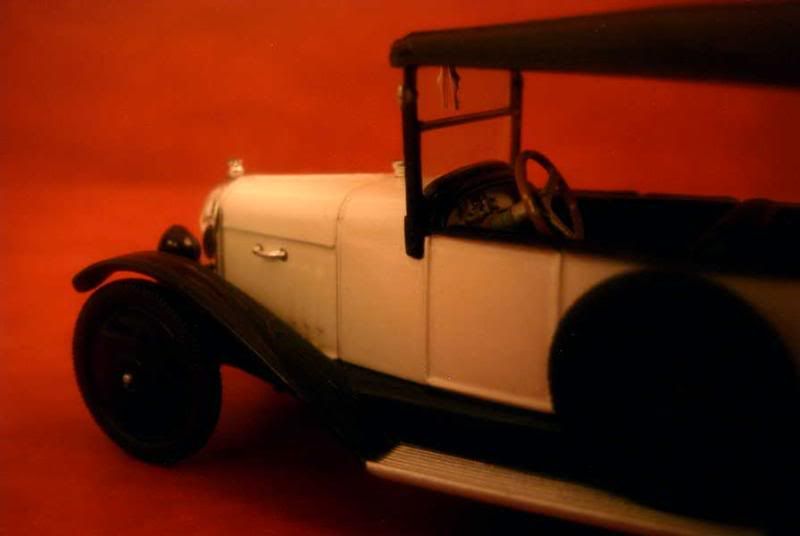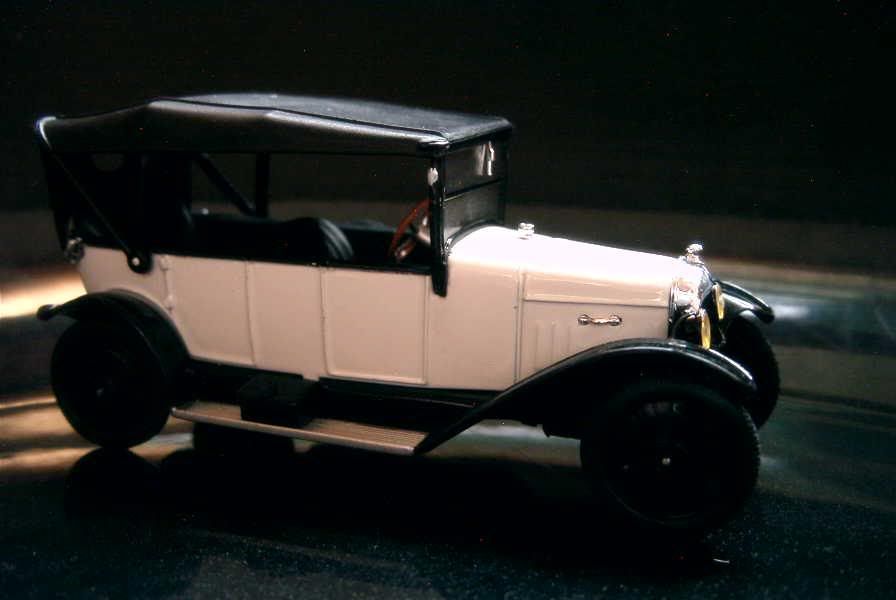A little history
Among all French automobile manufacturers, and particularly when compared with Peugeot and Renault which were both building vehicles by the turn of the twentieth century, Citroën is a relative newcomer. Born into a family of diamond brokers of Dutch ancestry, André Citroën made a fortune overnight by mass-producing cheap double-chevron gears, thanks to methods inspired by Ford. The year was 1913, and twelve months later almost the whole of Europe would be engulfed in a bloody conflict. Citroën’s factory, as many others, was requested to deliver artillery ammunition. The industrialist applied the same methods to its new production than he had done previously, and soon became one of the most efficient supporters of the war effort.
Army contracts kept Citroën’s Parisian plant, located on the Quai de Javel along the Seine river, quite busy. Nevertheless the man knew that the conflict wouldn’t last forever. Providing his country would win, how could he employ his factory, which had grown considerably since 1914? As soon as 1917, André Citroën didn’t have much doubt: automobiles were the answer. Once again, they would be mass-produced using Ford’s methods, in order to be within the reach of many rather than to be an expensive toy for the better class.
While his workers were making shells, one of his top engineers, the noted specialist of popular cars Jules Salomon, designed the first Citroën car. In November 1918, the war was over. As soon as May 1919, the first Type As rolled out the assembly line at Javel.
The Type A, sometimes called “10CV” from its classification under the French fiscal system of the time, was a modern yet unremarkable little car. Its power came from a small inline four displacing 1.3 litre. With 18 hp, it could reach 65 kph, enough then as long as the road was flat. A variety of bodies could be fitted. But the main feature of the Citroën was intangible: the new car offered superior quality, albeit for a low price that only the shaky and cramped cyclecars could match.
Success was instant, as with any other endeavour into which Citroën had ventured up to then. Soon a hundred Type As were built every single day at Javel and the company, shortly after its sudden intrusion onto the automobile stage, was already the industry’s leader in the country, and one of the major players on the continent, where everyone soon switched to the rational methods of production Citroën had imported from America.
The Type A was built until July 1921, when the Javel factory was converted for the production of a new model, bigger and better yet cheaper than ever, the B2 which inaugurated the Type B series.
About the model
Model: Citroën Type A
Year: 1919
Maker: Universal Hobbies
Scale: 1/43
Distributed by: Atlas as no.21 of its Passion Citroën press series
Acquired: brand new, in May 2006, in Souillac, France
Die-casts of pre-1930 cars are rather uncommon. There are many contributing factors: smaller potential market, endless variety of models (automobiles were then offered by more brands, in many different body styles, and were updated almost every year), more separate parts to assemble in order to produce these scale models. Therefore it seems fair to cheer at Universal Hobbies’ efforts. Atlas’ Passion Citroën press series could have been filled mostly by post-war models, but instead U.H. followed a rougher path, reproducing virtually all models from the Twenties in at least one body style. Furthermore, these models are excellent, being both perfectly modelled and well assembled. I’ll give a 14/20 to this die-cast.




Among all French automobile manufacturers, and particularly when compared with Peugeot and Renault which were both building vehicles by the turn of the twentieth century, Citroën is a relative newcomer. Born into a family of diamond brokers of Dutch ancestry, André Citroën made a fortune overnight by mass-producing cheap double-chevron gears, thanks to methods inspired by Ford. The year was 1913, and twelve months later almost the whole of Europe would be engulfed in a bloody conflict. Citroën’s factory, as many others, was requested to deliver artillery ammunition. The industrialist applied the same methods to its new production than he had done previously, and soon became one of the most efficient supporters of the war effort.
Army contracts kept Citroën’s Parisian plant, located on the Quai de Javel along the Seine river, quite busy. Nevertheless the man knew that the conflict wouldn’t last forever. Providing his country would win, how could he employ his factory, which had grown considerably since 1914? As soon as 1917, André Citroën didn’t have much doubt: automobiles were the answer. Once again, they would be mass-produced using Ford’s methods, in order to be within the reach of many rather than to be an expensive toy for the better class.
While his workers were making shells, one of his top engineers, the noted specialist of popular cars Jules Salomon, designed the first Citroën car. In November 1918, the war was over. As soon as May 1919, the first Type As rolled out the assembly line at Javel.
The Type A, sometimes called “10CV” from its classification under the French fiscal system of the time, was a modern yet unremarkable little car. Its power came from a small inline four displacing 1.3 litre. With 18 hp, it could reach 65 kph, enough then as long as the road was flat. A variety of bodies could be fitted. But the main feature of the Citroën was intangible: the new car offered superior quality, albeit for a low price that only the shaky and cramped cyclecars could match.
Success was instant, as with any other endeavour into which Citroën had ventured up to then. Soon a hundred Type As were built every single day at Javel and the company, shortly after its sudden intrusion onto the automobile stage, was already the industry’s leader in the country, and one of the major players on the continent, where everyone soon switched to the rational methods of production Citroën had imported from America.
The Type A was built until July 1921, when the Javel factory was converted for the production of a new model, bigger and better yet cheaper than ever, the B2 which inaugurated the Type B series.
About the model
Model: Citroën Type A
Year: 1919
Maker: Universal Hobbies
Scale: 1/43
Distributed by: Atlas as no.21 of its Passion Citroën press series
Acquired: brand new, in May 2006, in Souillac, France
Die-casts of pre-1930 cars are rather uncommon. There are many contributing factors: smaller potential market, endless variety of models (automobiles were then offered by more brands, in many different body styles, and were updated almost every year), more separate parts to assemble in order to produce these scale models. Therefore it seems fair to cheer at Universal Hobbies’ efforts. Atlas’ Passion Citroën press series could have been filled mostly by post-war models, but instead U.H. followed a rougher path, reproducing virtually all models from the Twenties in at least one body style. Furthermore, these models are excellent, being both perfectly modelled and well assembled. I’ll give a 14/20 to this die-cast.







No comments:
Post a Comment